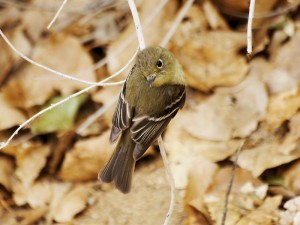We made a May 18th run up to the migrant traps of the northwest Mojave and southern Kern County recently. It was probably a bit early for such a trip, but there wasn’t much going on down in Orange County. And you never know what you will find up there. We left at an ungodly hour and arrived at Butterbredt Spring, the Audubon California Kern River Preserve, shortly after dawn. It wasn’t a great day for it: the wind was whipping at a steady 25 mph. But even on the road in from Jawbone Canyon, we could see lots of birds on the move. Despite the blow, Wilson’s Warblers, Swainson’s Thrushes and flycatchers were crossing the road in droves. They stayed low to the ground, contour flying out over the open desert hills.
Butterbredt Springs
The preserve itself was simply alive with birds. We saw 5 species of warbler, 9 species of flycatcher and assorted passerines, like Lazuli Buntings and Black-headed Grosbeaks. One great thing about a morning like this is the chance to study difficult species like the (Empidonax) flycatchers. It’s always nice to have a chance to compare and contrast this difficult group in terms of their structural differences. We recorded five species of Empids that day, with Pacific-slope and Willow Flycatchers being the most common. A few Hammond’s, Dusky and Gray Flycatchers put in an appearance as well. We also had great looks at Olive-sided Flycatchers and Western Wood-Pewees (photo) together. Watching these similar species side-by-side at close range made their structural differences much easier to see. Listening to them talk, particularly the two commonest Empid species, was also a pleasure. Continue reading

